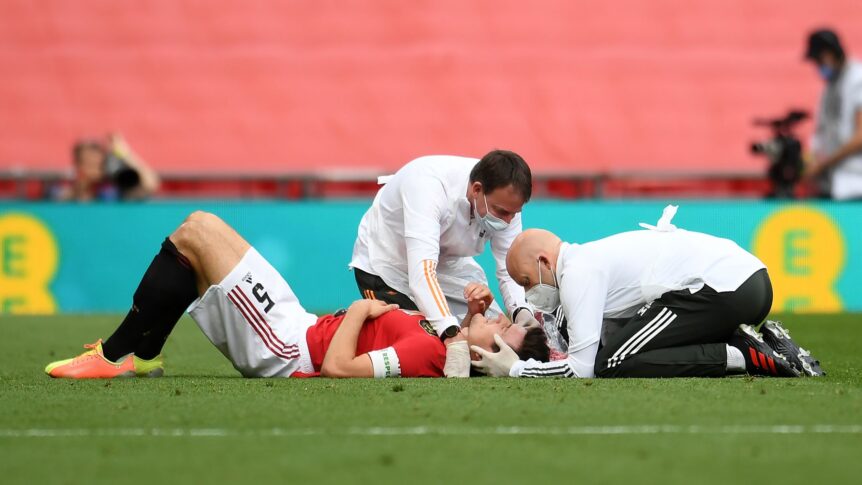Garcia, G.-G. P., et al.
Sports Med. 53, 2513–2528 (2023).
Background: A key component of return-to-play (RTP) from sport-related concussion is the symptom-free waiting period (SFWP), i.e., the period during which athletes must remain symptom-free before permitting RTP. Yet, the exact relationship between SFWP and post-RTP injury rates is unclear.
Objective: We design computational simulations to estimate the relationship between the SFWP and rates of repeat concussion and non-concussion time-loss injury up to 30 days post-RTP for male and female collegiate athletes across 13 sports.
Methods: We leverage N = 735 female and N = 1,094 male post-injury trajectories from the National Collegiate Athletic Association-Department of Defense Concussion Assessment, Research, and Education Consortium.
Results: With a 6-day SFWP, the mean [95% CI] rate of repeat concussion per 1,000 simulations was greatest in ice hockey for females (20.31, [20.16, 20.46]) and American football for males (24.16, [24.05, 24.28]). Non-concussion time-loss injury rates were greatest in field hockey for females (153.66, [152.59, 154.74]) and wrestling for males (247.34, [246.20, 248.48]). Increasing to a 13-day SFWP, ice hockey for females (18.88, [18.79, 18.98]) and American football for males (23.16, [23.09, 24.22]) exhibit the greatest decrease in repeat concussion rates across all sports within their respective sexes. Field hockey for females (143.24, [142.53, 143.94]) and wrestling for males (237.73, [236.67, 237.90]) exhibit the greatest decrease in non-concussion time-loss injury rates. Males receive marginally smaller reductions in injury rates for increased SFWP compared to females (OR = 1.003, p ≤ 0.002).
Conclusion: Longer SFWPs lead to greater reductions in post-RTP injury rates for athletes in higher risk sports. Moreover, SFWPs should be tailored to sport-specific post-RTP injury risks

